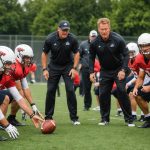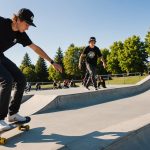Combat sports require not only skill and technique but also immense strength and stability. The key to unlocking peak performance often lies within the body’s central powerhouse: the core. From boxing to martial arts, athletes depend on a robust core to enhance their balance, generate power, and withstand the rigors of intense competition. Today, we delve into the pivotal role a strong core plays in combat sports, exploring the benefits it brings, the best exercises to strengthen it, and why every athlete should prioritize core training.
The Role of Core Muscles in Combat Sports
The core is much more than just a six-pack. It encompasses a group of muscles that play a vital role in nearly every movement. At the heart of combat sports is the ability to channel force through the body, which is facilitated by the core. This powerful group includes the transverse abdominis, the obliques, the rectus abdominis, and the lower back muscles.
Also to read : Enhancing athletic recovery: the impact of massage therapy on combat sports athletes in the uk
These muscles work in harmony to provide stability and support for the body. In martial arts, a stable core is essential for maintaining proper stance, executing movements with precision, and minimizing the risk of injury. Similarly, in boxing, a strong core is crucial for delivering punches with maximum power and maintaining balance during rapid footwork.
Furthermore, core muscles act as a bridge between the lower and upper body. This connection allows athletes to effectively transfer energy, ensuring that every punch, kick, or throw is performed with optimal efficiency. For combat sports athletes, developing a resilient core can be the difference between a good performance and a great one.
Also to read : Elevate your boxing game: leveraging cutting-edge technology for enhanced punching precision among uk fighters
Core Exercises for Enhancing Athletic Performance
To elevate your combat sports prowess, incorporating specific core exercises into your training regimen is essential. By targeting different parts of the core, you can build a well-rounded foundation of strength and stability.
-
Planks: A fundamental exercise that engages multiple core muscles. Planks help improve endurance, stability, and overall core strength, enhancing balance and coordination in combat scenarios.
-
Russian Twists: These focus on the obliques and enhance rotational strength, crucial for executing powerful strikes and evasive maneuvers.
-
Medicine Ball Slams: A dynamic exercise that trains explosive power and core stability, essential for translating force during combat.
-
Hanging Leg Raises: This targets the lower abs and hip flexors, contributing to core strength and aiding in quick movements and kicks.
-
Deadlifts: While primarily a strength-building exercise, deadlifts significantly engage the core, improving overall body strength and posture.
By consistently integrating these exercises, athletes can achieve greater core strength, balance, and stability, directly translating to improved performance in the ring or on the mat.
The Impact of Core Stability on Performance
Core stability is the unsung hero of athletic achievement. It influences not only physical performance but also contributes to mental acuity and confidence. In combat sports, the core functions as the body’s center of gravity, impacting agility and endurance.
A stable core allows athletes to maintain optimal posture, reducing the likelihood of fatigue and injury. This is particularly crucial in demanding sports where quick reflexes and sustained effort are required. For instance, martial artists rely heavily on a stable core to execute swift movements without compromising form.
Moreover, core stability enhances the ability to absorb and redirect force. When a boxer delivers a punch, the core acts as a conduit, transferring energy from the legs through to the upper body. This not only results in a more powerful strike but also helps in maintaining balance after the impact.
In essence, a stable core acts as the foundation upon which all other skills are built, providing the body with the necessary support to function efficiently under pressure.
Training the Core: A Holistic Approach
While specific exercises target the core, a comprehensive approach to core training involves more than just isolated movements. To truly unlock the potential of your core, consider integrating compound exercises and functional movements into your regimen.
Functional training emphasizes movements that mimic real-life actions, which can be especially beneficial for combat sports. Exercises like kettlebell swings or battle ropes engage the core dynamically, offering a more holistic workout.
Additionally, don’t underestimate the role of flexibility and mobility in core training. Incorporating yoga or Pilates can enhance core strength by promoting flexibility and resilience, vital for executing complex martial arts techniques.
Ultimately, adopting a well-rounded approach ensures that the core is not only strong but also versatile, ready to meet the demands of any combat sports scenario.
In the realm of combat sports, where every advantage counts, the importance of a strong core cannot be overstated. It is the epicenter of power, stability, and balance—the trinity that defines successful athletes.
Investing time in core training is not merely an accessory to athletic performance but a necessity. It enhances movement efficiency, reduces the risk of injury, and unlocks the potential for improved performance. As you strive to excel in the ring or on the mat, remember that a resilient core is your most formidable ally.
So, take the first step toward athletic excellence: prioritize your core, and watch as your combat sports skills soar to new heights. The strength of your core is the strength of your body, and in the world of sports, it is your superpower.











